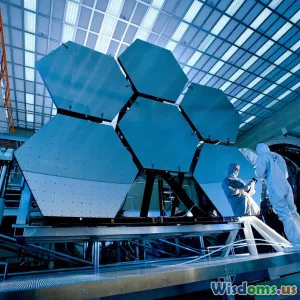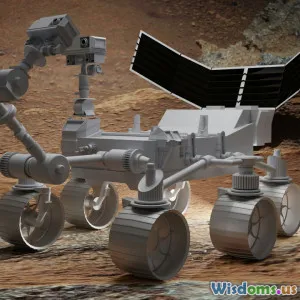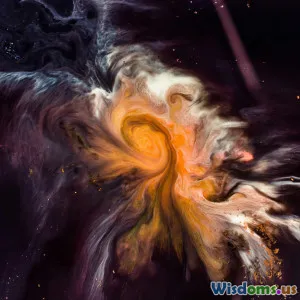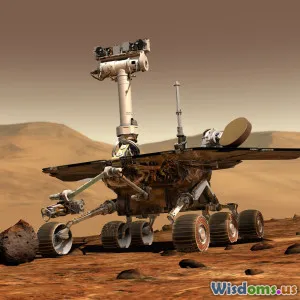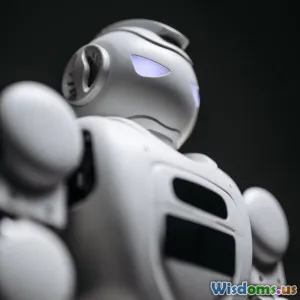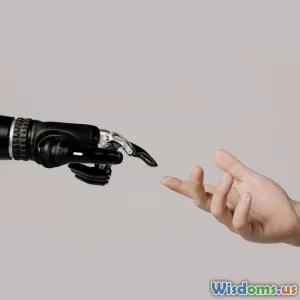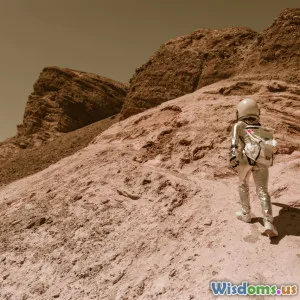
Sci Fi Narratives Shaping Future Technologies
7 min read Explore how science fiction narratives inspire and shape emerging technologies of tomorrow. (0 Reviews)
Sci-Fi Narratives Shaping Future Technologies
Introduction: The Power of Imagination in Science
Captain Jean-Luc Picard once said, “Seize the time... Live now! Make now always the most precious time. Now will never come again.” Science fiction has long seized the collective imagination of humanity, painting vivid pictures of alternate realities and advanced civilizations. Beneath the stories of interstellar travel, androids, and artificial intelligences lies a remarkable truth — sci-fi is not just entertainment but a catalyst that shapes how we conceive and create future technologies.
From the early dreams of Jules Verne predicting submarines and moon landings to contemporary depictions of AI in shows like "Black Mirror," sci-fi narratives have acted as blueprints, warnings, and inspirations for engineers and innovators shaping our real-world technologies. This article explores how the imaginative realms of science fiction actively influence the technology of tomorrow.
The Symbiotic Relationship Between Sci-Fi and Technology
Science fiction and technological innovation share an intertwined history. Creators in the speculative fiction genre don’t just imagine; they often forecast and even inspire. Consider Arthur C. Clarke, whose 1945 paper theorized a communication satellite, anticipating modern satellite telecommunications. His work in 2001: A Space Odyssey cleverly depicted computer intelligence through HAL 9000, a fictional AI that challenges and questions its human operators.
In many cases, these narratives offer not only technical possibilities but ethical and societal frameworks. The dystopian tone in works such as George Orwell’s 1984 cautions us about surveillance technologies and government overreach.
Key Technology Areas Influenced by Sci-Fi Narratives
1. Artificial Intelligence and Robotics
Isaac Asimov’s “Three Laws of Robotics” serve as foundational principles studied beyond fiction — influencing engineers designing ethical AI systems today. These laws emphasize safety and the moral responsibilities towards humans. The growing presence of AI assistants like Siri, Alexa, and autonomous robots echoes sci-fi’s imagined scenarios of human-robot interaction.
Researchers increasingly look to novels and films for ideas on both technological design and the social implications of AI. Real-world examples, such as Hanson Robotics’ humanoid robot Sophia, show the blending of sci-fi aesthetics and genuine robotics engineering.
2. Space Exploration and Colonization
The excitement around Mars colonization and deep-space probes owes much to sci-fi narratives. Mars, from the canal stories of Percival Lowell to Andy Weir’s The Martian, fuels public imagination and funding for NASA and private companies like SpaceX.
Elon Musk has repeatedly cited The Martian as an inspiration for his Mars ambitions. Similarly, concepts of space elevators and faster-than-light travel, often dreamt up by sci-fi authors, actively stimulate research into unconventional propulsion systems and space infrastructure.
3. Wearable and Augmented Technologies
The notion of wearable technology originally seemed futuristic, then sci-fi tropes like the Tron suit or Iron Man’s armor helped stimulate the real-world development of smart glasses, wearable sensors, and exoskeletons.
Google Glass and Microsoft’s HoloLens are direct outcomes of technology inspired by sci-fi depictions of augmented reality, blending digital information with physical surroundings to enhance human capabilities.
4. Biotechnology and Human Enhancement
Sci-fi literature frequently examines genetic engineering, cybernetic augmentations, and mind uploading. Works such as William Gibson’s Neuromancer and more recently, the TV series Altered Carbon, probe deep questions about identity and technology.
The real-world biotechnology sector sees burgeoning advances in CRISPR gene editing, prosthetics, and brain-computer interfaces reminiscent of these speculative concepts.
Real-World Examples of Sci-Fi-Inspired Innovation
- Tablet Computers: Steve Jobs famously attributed the design inspiration for the iPad to the electronic tablets seen in Star Trek.
- Mobile Phones: The communicators from Star Trek: The Original Series bear striking resemblance to today’s flip cellular phones.
- 3D Printing: Popularized in sci-fi settings for creating everything from food to replacement parts, 3D printing is a rapidly developing technology impacting industries globally.
Critiques and Challenges
While sci-fi’s role as inspiration is profound, it’s equally important to view it critically. Not all imagined futures are feasible or ethical. The challenge lies in discerning applicable visions and recognizing bias or dystopian exaggeration that might skew societal perspectives.
Moreover, sci-fi often reflects the cultural context of its time, sometimes overlooking inclusivity or technological limitations. Awareness of these aspects is crucial for responsible innovation.
Conclusion: Embracing the Fiction to Forge the Future
Science fiction is much more than fanciful storytelling — it is a vibrant force pushing humanity to question limits and redefine possibility. Its narratives provide templates, warnings, and inspiration for technologies that may one day be commonplace.
By analyzing these creative expressions, technologists and society gain a richer understanding of emerging potentials and ethical considerations. The future of technology, informed by the imaginations of sci-fi writers, ensures that as we step forwards, we carry with us foresight, curiosity, and a vision to create a better tomorrow.
Let these stories be reminders: today's fiction might well be the foundation stone of tomorrow's reality.
Rate the Post
User Reviews
Popular Posts










